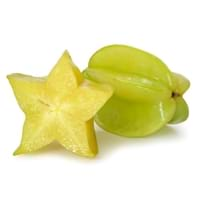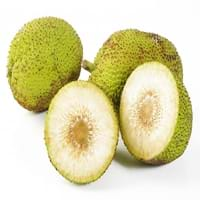Health Benefits
Cancer prevention, Heat stroke treatment
Cancer prevention, Heart care, Maintains healthy cholesterol level, Treatment of skin Diseases
General Benefits
Anti oxidant properties, Anti-inflammatory properties, Digestive aid, Maintains healthy cholesterol level, Treatment of sore eyes
Boosts immune system, Digestive aid, Helps in weight loss, Maintains healthy cholesterol level
Skin Benefits
Anti-aging benefits, Heals sunburn, Skin rejuvenation
Anti-aging benefits, Skin rejuvenation, Treatment of skin diseases
Hair Benefits
Promotes longer and healthier hair, Protects hair
Protects hair, Regulates hair growth, Treatment of dandruff
Allergy Symptoms
NA
Hives, Inflammation of nose, Swelling of mouth, tongue or lips
Side Effects
Nausea, Vomiting
Allergic reaction
Best Time to Eat
As a snack in the late afternoon, Eat the fresh ones, avoid mixing with any other foods, don't eat after meal., Strictly avoid empty stomach
Along with meal, As a snack in the late afternoon, Don't consume at night and before bed, Don't eat after meal
Vitamin B5 (Pantothenic Acid)
Vitamin C (Ascorbic Acid)
Vitamin K (Phyllochinone)
Calories in Fresh Fruit with Peel
Not Available
Calories in Fresh Fruit without Peel
Not Available
Calories in Frozen Form
Not Available
Not Available
Calories in Dried Form
Not Available
Calories in Canned Form
Not Available
Not Available
Calories in Pie
Not Available
Type
Tree fruit
Fruit vegetable, Tropical
Season
Autumn, Spring, Summer
All seasons
Varieties
King, Bell, Sri Kembangan, Arkin and Fwang Tung
Koqo, Tamaikora, Temaipo, Uto Kuro, Samoa, Buco Ni Viti and Kulu Dina
Color
Golden yellow, Green
White, Yellow
Inside Color
Yellowish Green
White
Shape
Oval and Star(Cross section)
Oval
Taste
Crisp, Juicy, Sweet
Bland
Origin
Sri Lanka
South Pacific
Grows on
Not Available
Trees
Soil Type
Loam, Well-drained
Loam, Sand, Sandy loam, Well-drained
Climatic Conditions
Moist, Warm to hot climate
Humid, Rainfall, Warm
Facts about
- When carambola is cut horizontally, it forms a star.
- It is believed that carambola helps to cure hangover.
- Entire carambola is edible, including its skin.
- 2 varieties of carambola are cultivated: tart & sweet.
- The milky sap of breadfruit tree is used as glue & bark is used to make papers.
- Breadfruit tree produces 1st fruit after 2-3 years from planting & remains productive for decades.
- The seeds of breadfruit are edible.
Top Producer
Taiwan
Jamaica
Other Countries
Australia, Guyana, India, Israel, Malaysia, Philippines, United States of America
Africa, India, United States of America
Top Importer
Europe
United States of America
Top Exporter
Malaysia
Jamaica
Botanical Name
Averrhoa carambola
Artocarpus altilis
Synonym
Not Available
Artocarpus communis or Artocarpus incisa
Subkingdom
Tracheobionta
Tracheobionta
Division
Magnoliophyta
Magnoliophyta
Class
Magnoliopsida
Magnoliopsida
Subclass
Rosidae
Magnollidae
Family
Oxalidaceae
Moraceae
Genus
Averrhoa
Artocarpus
Species
A. carambola
A. altilis
Generic Group
Not Available
Mulberry
Difference Between Carambola and Breadfruit
We might think that Carambola and Breadfruit are similar with respect to nutritional value and health benefits. But the nutrient content of both fruits is different. Carambola and Breadfruit Facts such as their taste, shape, color, and size are also distinct. The difference between Carambola and Breadfruit is explained here.
The amount of calories in 100 gm of fresh Carambola and Breadfruit with peel is 31.00 kcal and Not Available and the amount of calories without peel is Not Available and 103.00 kcal respectively. Thus, Carambola and Breadfruit belong to and category.These fruits might or might not differ with respect to their scientific classification. The order of Carambola and Breadfruit is Oxalidales and Rosales respectively. Carambola belongs to Oxalidaceae family and Breadfruit belongs to Moraceae family. Carambola belongs to Averrhoa genus of A. carambola species and Breadfruit belongs to Artocarpus genus of A. altilis species. Beings plants, both fruits belong to Plantae Kingdom.









